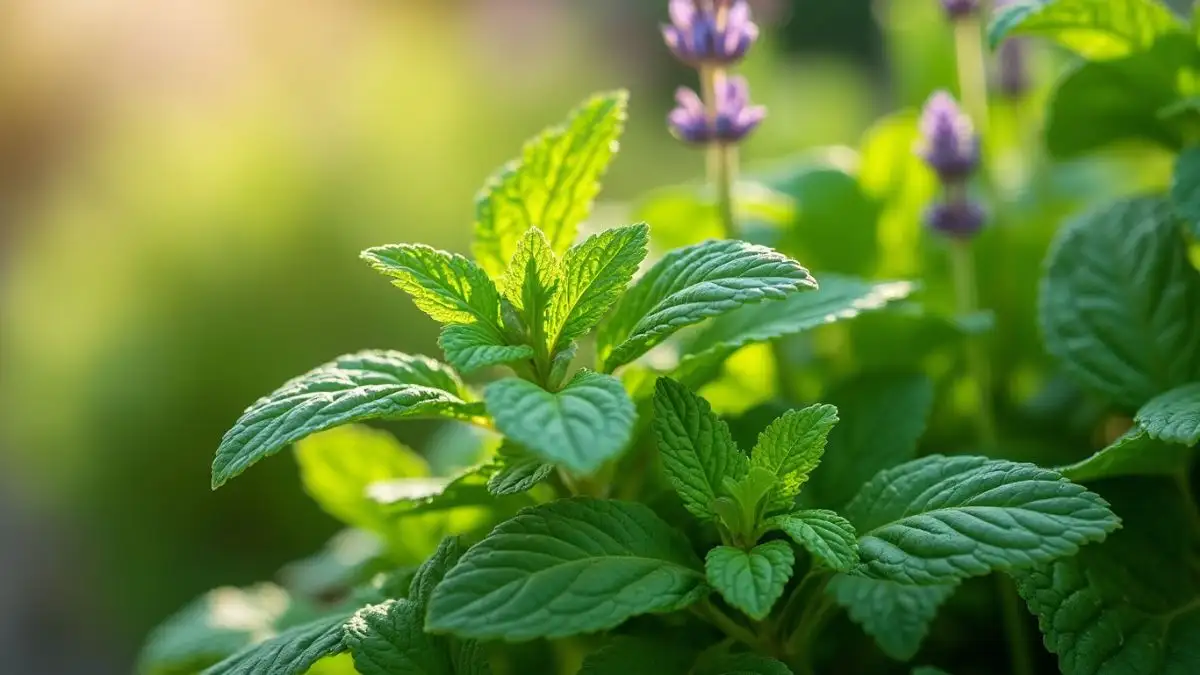A Fresh Perspective on Peppermint Plants
Imagine walking into your garden and catching the crisp, refreshing aroma of peppermint. This isn’t just an ordinary plant; it’s a powerhouse of benefits that can elevate your health, enhance your home, and transform your garden. Peppermint plants are versatile, easy to grow, and brimming with advantages that make them a must-have. Whether you’re interested in growing your own or using it for its many benefits, this guide will give you everything you need to know about peppermint plants, including how to grow, care for, and creatively use this incredible herb.
Table of Contents
What Are Peppermint Plants?
A Brief Overview of Peppermint
Peppermint (Mentha piperita) is a hybrid herb created by crossing watermint and spearmint. Its vibrant green leaves, tinged with a hint of purple, exude a strong, minty scent. Native to Europe and the Middle East, this hardy plant has found its way into gardens and kitchens worldwide.
- Known for its aromatic oils and medicinal properties.
- Thrives in a variety of climates and grows well in both gardens and containers.
Why Peppermint Is So Popular
Peppermint’s popularity spans centuries, thanks to its many uses and benefits. From teas and essential oils to pest control and cooking, peppermint is incredibly versatile. It’s also a favorite among gardeners for its ability to repel pests naturally.
Varieties of Peppermint
- Black Peppermint: Dark stems with a stronger aroma, commonly used for essential oils.
- White Peppermint: Lighter stems and a milder taste, perfect for culinary use.
- Chocolate Peppermint: A variety with a subtle chocolate aroma, ideal for desserts and beverages.
7 Amazing Benefits of Peppermint Plants
1. Natural Stress Reliever

The invigorating scent of peppermint has calming effects on the mind and body. Peppermint aromatherapy has been shown to reduce stress, improve mood, and even enhance sleep quality.
- How to Use: Add a few drops of peppermint essential oil to your diffuser to create a relaxing atmosphere at home or work.
- Extra Tip: Place a small potted peppermint plant in your bedroom for a natural, calming fragrance.
2. Boosts Digestive Health
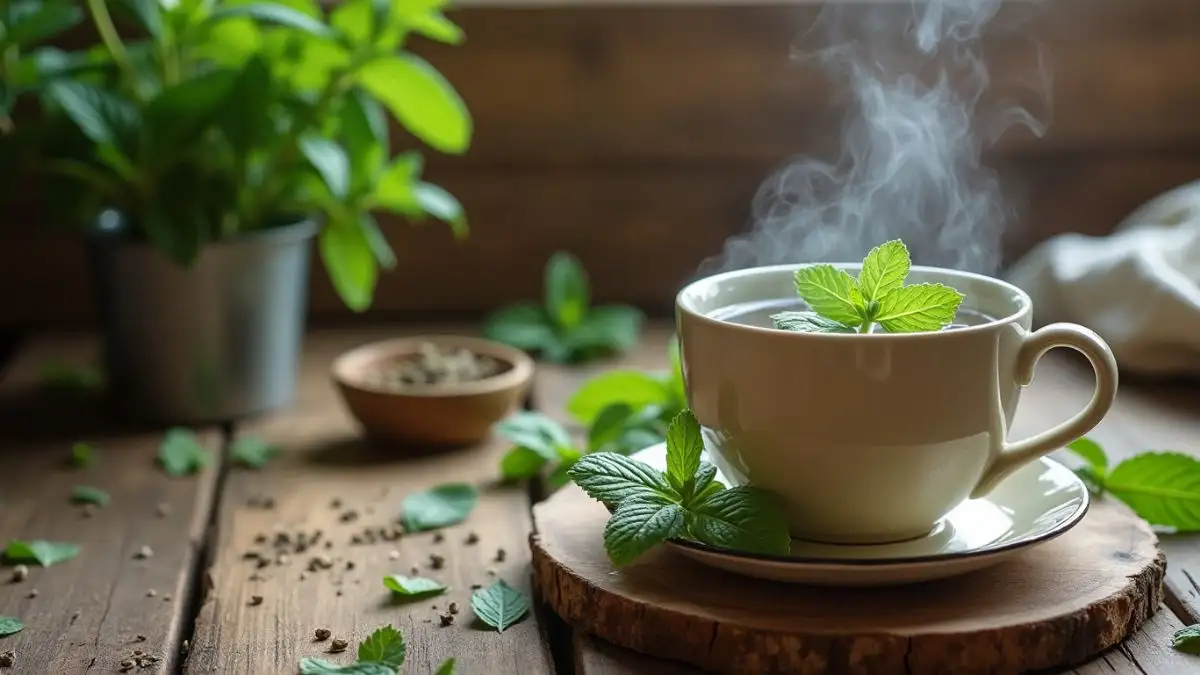
Peppermint has been traditionally used to ease digestive discomfort. Peppermint offers natural relief for issues like bloating, indigestion, and nausea. Peppermint’s menthol helps relax the muscles in the gastrointestinal tract, aiding in smoother digestion.
- For example, enjoy a cup of peppermint tea after meals to support digestion and alleviate stomach discomfort.
- Alternative Use: Chew fresh peppermint leaves as a quick remedy for nausea.
3. Enhances Respiratory Health

Peppermint acts as a natural decongestant, making it an excellent remedy for colds, allergies, and respiratory issues. The menthol in peppermint helps open airways and provides relief from coughing and congestion.
- DIY Tip: Add fresh peppermint leaves to hot water and inhale the steam to clear your sinuses.
- Quick Fix: Mix a few drops of peppermint oil with a carrier oil and rub it on your chest for relief.
4. Soothes Skin Irritations
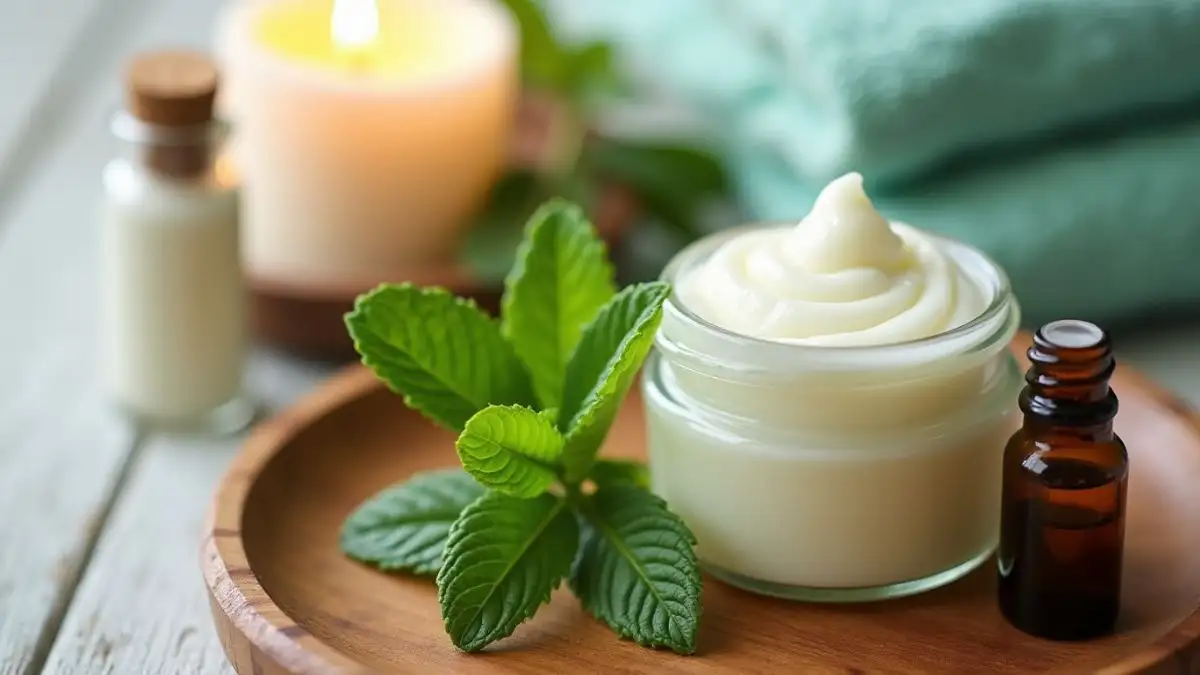
Peppermint oil’s cooling properties are perfect for relieving itching, sunburn, and rashes. Its antibacterial properties also make it effective in preventing infections in minor cuts or abrasions.
- DIY Balm: Mix peppermint oil with coconut oil and aloe vera gel to create a soothing treatment for minor skin irritations.
- Bonus Use: Add a few drops of peppermint oil to your bath for a refreshing and relaxing soak.
5. Natural Pest Repellent
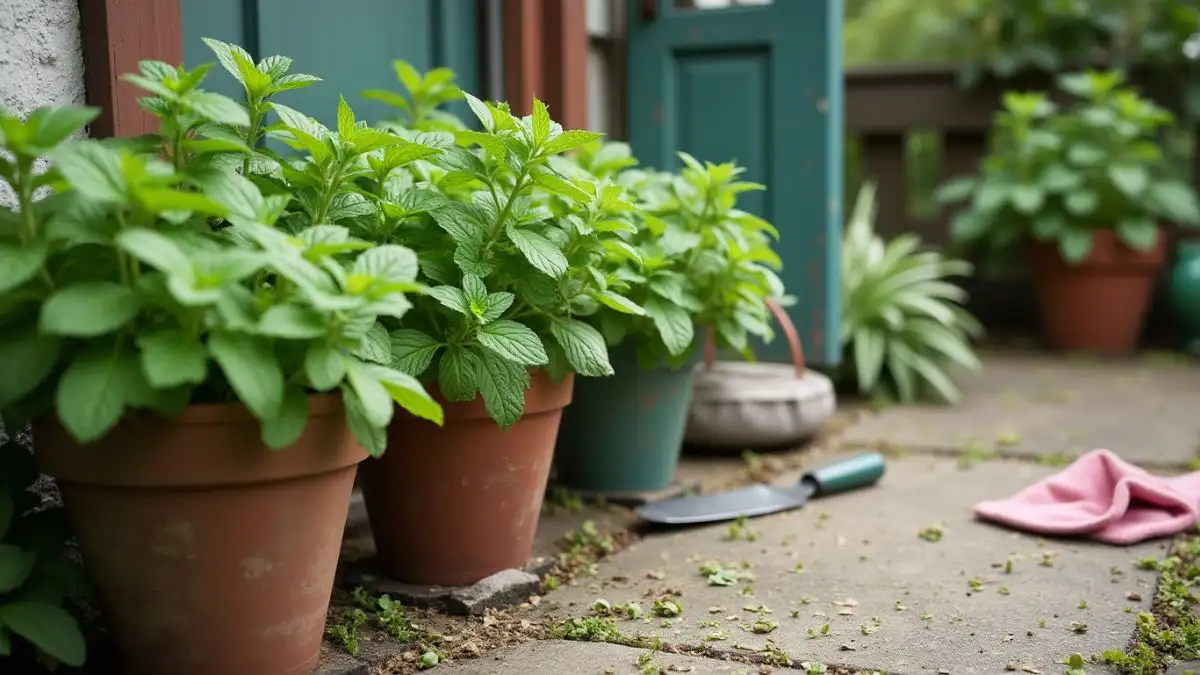
Peppermint plants repel mosquitoes, ants, and other garden pests. They’re a chemical-free, eco-friendly way to protect your home and garden.
- Quick Hack: Place potted peppermint plants near doorways, windows, or patios to deter insects.
- Gardening Tip: Crush peppermint leaves and scatter them around your garden to keep pests at bay.
6. Culinary Versatility
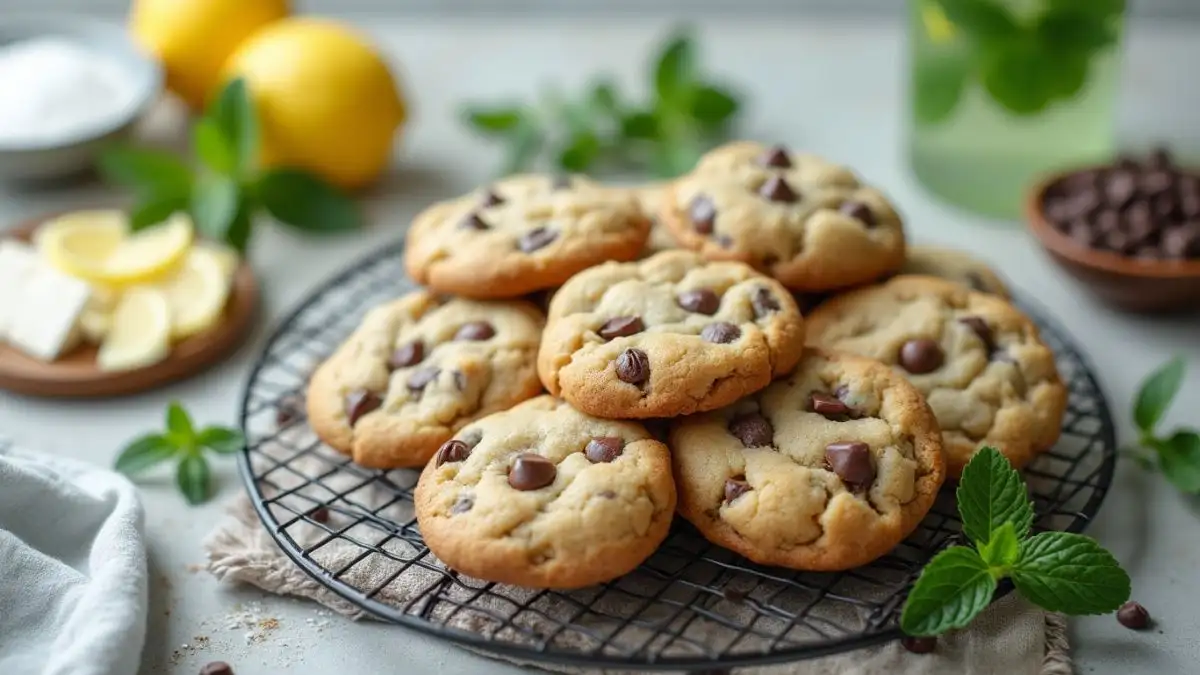
Peppermint leaves add a refreshing flavor to a variety of dishes and drinks. From desserts to savory meals, its versatility shines in the kitchen. Incorporate it fresh or dried to elevate your culinary dishes.
- Recipe Idea: Peppermint Chocolate Chip Cookies
| Ingredient | Quantity |
| Fresh peppermint leaves | 2 tbsp |
| Unsalted butter | 1 cup |
| Sugar | 1 cup |
| All-purpose flour | 2.5 cups |
| Chocolate chips | 1.5 cups |
7. Improves Mental Clarity
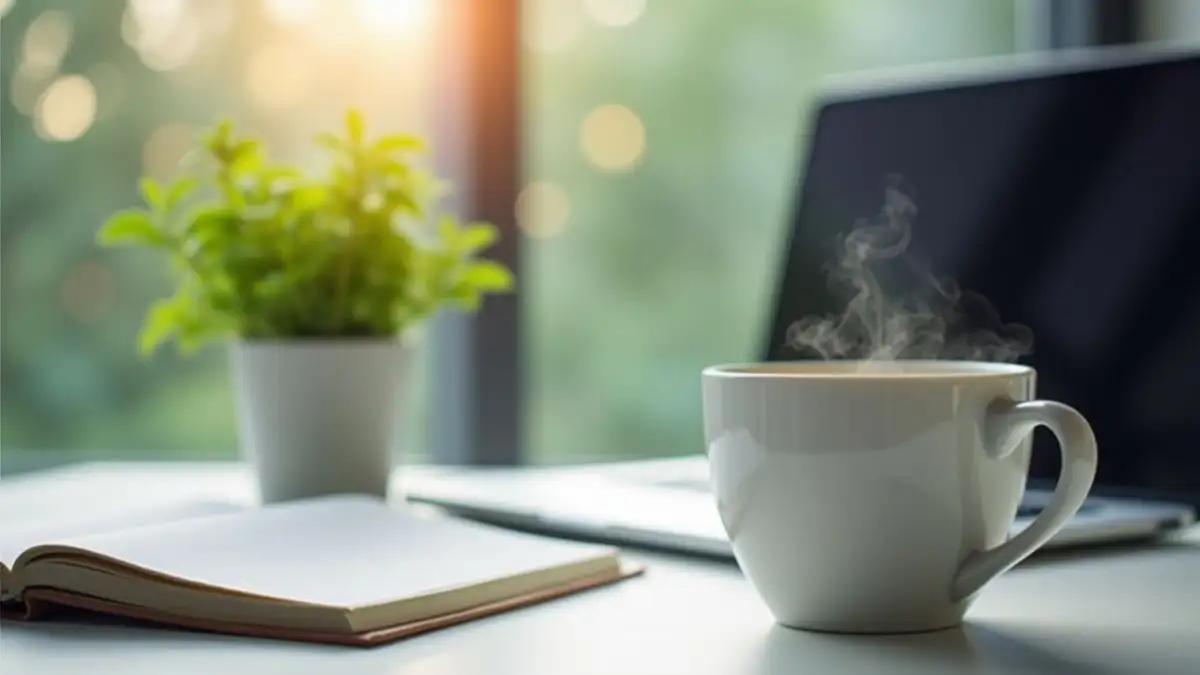
Inhaling peppermint can boost focus and concentration, making it an ideal companion during work or study sessions. Its stimulating scent helps combat fatigue and enhances alertness.
- Pro Tip: Keep a small pot of peppermint on your desk for a quick mental pick-me-up.
- Alternative Use: Dab a drop of peppermint oil on your temples for an instant refresh.
A Guide to Growing and Caring for Peppermint Plants
Growing Conditions
Peppermint thrives in moist, well-drained soil and partial to full sunlight. It’s an adaptable herb that grows well in USDA hardiness zones 3-11. With proper care, it can thrive in both indoor and outdoor environments.
Planting Peppermint: Step-by-Step
- Select an appropriate spot: Choose a location with partial shade.
- Prepare the soil by making sure it is rich in nutrients and drains well.
- Planting: Sow seeds or plant cuttings in spring. Plant your plants 18-24 inches apart to give them room to grow.
- Container Gardening: Use pots to prevent peppermint from spreading aggressively.
Watering and Maintenance
- Water regularly to maintain moist soil without over-saturating it.
- Prune frequently to promote dense growth and avoid premature flowering.
Common Problems and Solutions
- Yellowing Leaves: Overwatering or nutrient deficiencies. Adjust your watering schedule and add compost.
- Pests: Use neem oil or a natural garlic spray to deter aphids and spider mites.
Companion Plants for Peppermint
Pair peppermint with plants like cabbage, broccoli, or tomatoes to enhance their growth and deter pests. Do not plant it near chamomile, as they don’t grow well together.
Creative Uses of Peppermint Plants
Peppermint in Cooking
- Add chopped peppermint leaves to salads for a refreshing twist.
- Infuse water with peppermint and cucumber for a cooling drink.
- Make peppermint-infused syrups for cocktails or desserts.
Peppermint in Skincare
- DIY Sugar Scrub: Mix sugar, peppermint oil, and coconut oil for an exfoliating body scrub.
- Facial Mist: Combine peppermint water with rose water for a refreshing spray.
Peppermint for Home Fragrance
- Simmer fresh peppermint leaves with citrus peels for a natural air freshener.
- Make peppermint sachets to keep closets and drawers smelling fresh.
- Create homemade candles with peppermint essential oil for a calming aroma.
FAQs About Peppermint Plants
- What are peppermint plants good for?
Peppermint plants are excellent for cooking, natural remedies, pest control, and skincare. - Can peppermint grow indoors?
Yes, peppermint thrives in pots as long as it receives enough sunlight and regular watering. - How do you care for peppermint plants?
Provide moist soil, partial sunlight, and regular pruning to keep your plant healthy. - Where can I buy peppermint plants?
You can find peppermint plants at garden centers, online stores, or local nurseries. - How do you harvest peppermint leaves?
Harvest leaves in the morning by snipping stems near the base for maximum freshness. - Why is my peppermint plant turning yellow?
Yellowing leaves typically signal overwatering, inadequate drainage, or a lack of nutrients. - Can I use peppermint plants to repel pests?
Yes, peppermint plants effectively repel mosquitoes, ants, and flies both indoors and outdoors. - What’s the difference between spearmint and peppermint?
Peppermint has a stronger flavor due to higher menthol content, while spearmint is milder. - Is peppermint safe for pets?
Peppermint is safe for pets in small quantities, but consuming too much can lead to stomach discomfort. Always consult your vet. - How long does peppermint take to grow?
Peppermint typically matures in 90-120 days when grown from seeds. - Can I use peppermint in homemade cleaners?
Yes, peppermint oil is a natural disinfectant and can be added to homemade cleaning sprays. - Does peppermint attract bees?
Yes, peppermint flowers attract bees, making it beneficial for pollination in your garden.
Conclusion
This comprehensive guide dives deep into the world of peppermint plants, showcasing their remarkable versatility and benefits. The article provides readers with an engaging introduction, setting the stage for why peppermint is an essential herb for health, home, and garden enthusiasts alike.
Readers are taken on a journey, starting with an insightful overview of the plant. Learn about its hybrid nature, its aromatic charm, and its ease of cultivation, making it a favorite among gardeners. The article highlights peppermint’s historical and modern uses, demonstrating its significance in culinary arts, therapeutic remedies, and even eco-friendly gardening solutions.
The core of the article is dedicated to unveiling seven incredible benefits of peppermint plants:
- Stress Relief: Discover how peppermint’s soothing aroma helps reduce stress and enhance relaxation, supported by practical aromatherapy tips.
- Digestive Health: Learn how peppermint aids in relieving bloating and indigestion, with actionable advice like brewing peppermint tea after meals.
- Respiratory Benefits: Peppermint’s natural decongestant properties are discussed, offering effective remedies for colds, allergies, and asthma.
- Skin Care: The cooling properties of peppermint oil are explored, with DIY recipes for balms and scrubs to treat minor irritations.
- Pest Repellent: Peppermint’s ability to repel garden and household pests is explained, with tips on using potted plants or peppermint sprays.
- Culinary Versatility: The herb’s use in refreshing drinks, desserts, and savory dishes is showcased, featuring a peppermint chocolate chip cookie recipe.
- Mental Clarity: The article concludes with peppermint’s ability to boost focus and concentration, making it a perfect addition to workspaces.
Practical sections on how to grow and care for peppermint plants equip readers with essential tips, from ideal growing conditions to addressing common problems like yellowing leaves. For added depth, creative uses of peppermint in beverages, skincare, and home fragrance are provided, inspiring readers to incorporate this herb into their everyday lives.
Finally, the article ends with a motivational call-to-action, encouraging readers to embrace peppermint’s countless benefits by growing their own plants or exploring new ways to use this incredible herb.


